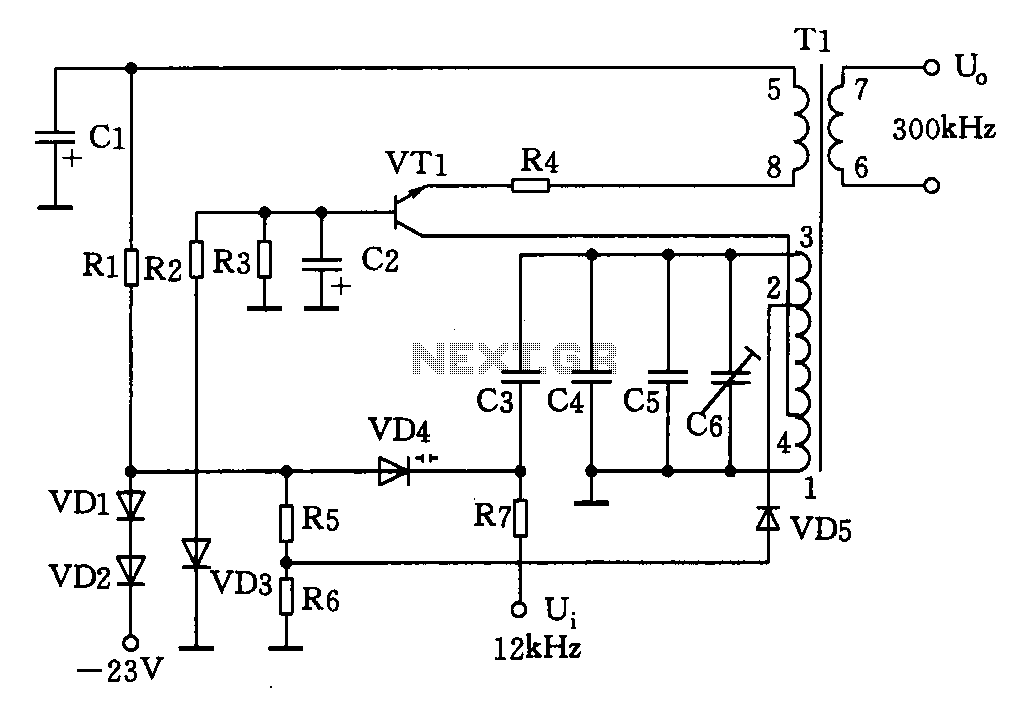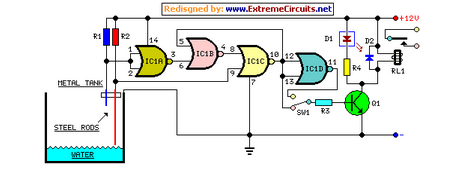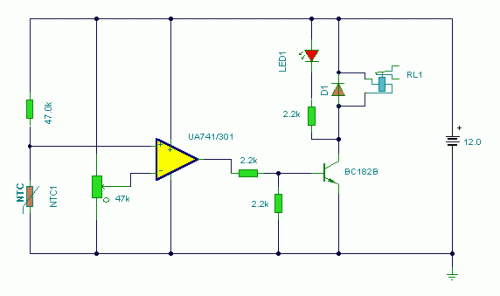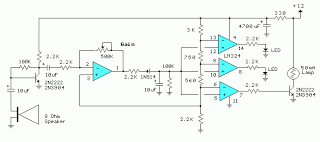
TTL Load circuit
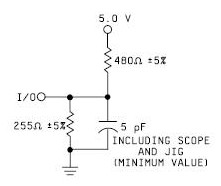
A device that conducts electric current and converts electrical energy into another form. Power consumed by a device or circuit while performing its function can be represented by a resistor and capacitor. The capacitor in the load circuit represents the capacitance of the load that the integrated circuit (IC) is driving. Additionally, the capacitor may also represent the capacitance of the measuring device used to verify the IC's performance with the load, such as the capacitance of a scope probe. There are two types of TTL loads: a standard resistive load and an active load. The active load, which uses diodes, ensures that the Device Under Test (DUT) switches a more realistic load that mimics another IC load. The passive load shown includes only a pull-up resistor because some ICs require a high pull to operate, such as in an open-collector configuration. Every input to an IC possesses some capacitance, so the load should include a capacitance value. Including an additional capacitance value to account for the test jig enhances the circuit's realism. Many datasheets do not provide an estimate of input capacitance, which reflects the capacitive load seen by the IC driving the chip. However, many datasheets do provide a load capacitance to ascertain switching time in the electrical characteristics section. This value or range of load capacitance can be utilized to determine input capacitance (Ci) when using ICs from the same logic family. In some cases, an input capacitance is specified, which is often much lower than the load capacitance (CL) used in timing measurements. For instance, a Ci of 2.6pF is specified in the 54ACT11 datasheet, while a load capacitance of 50pF is utilized in timing characteristics. The disparity between these capacitor values represents the difference between expected design parameters (Ci) and worst-case circuit examples (CL). Input capacitance is designed into the IC during fabrication, with some variation. However, the load capacitance experienced by the driver cannot be predetermined and will vary based on the integrated circuit receiving the signal.
The described circuit functions as a load for an integrated circuit (IC) in various testing scenarios. The load circuit typically consists of a resistor and capacitor, which simulate the electrical characteristics of the actual load that the IC will drive. The resistor serves to limit current and establish a basic resistive load, while the capacitor accounts for the reactive component, which can affect the timing and performance of the IC.
In practical applications, the capacitor in the load circuit may represent the inherent capacitance of the load being driven or the capacitance of the measuring equipment, such as an oscilloscope probe. This dual role of the capacitor is crucial for accurate testing and measurement, as it allows for a more realistic representation of the conditions the IC will face in operation.
The circuit can be designed to include both passive and active load configurations. The passive load typically features a pull-up resistor to ensure that specific ICs, particularly those with open-collector outputs, can operate correctly. In contrast, the active load configuration employs diodes that provide a more dynamic and realistic load condition, modeling the behavior of another IC that the DUT may interface with.
The inclusion of input capacitance is essential for accurate performance analysis. Each IC input inherently has some capacitance, which can affect switching times and signal integrity. Therefore, it is recommended to include this capacitance in the load circuit to replicate real-world conditions. When testing, it is also beneficial to account for additional capacitance from test jigs, which can further refine the accuracy of the measurements.
Datasheets for ICs often provide load capacitance values that can be used to gauge the expected performance and switching characteristics. However, it is not uncommon for the datasheet to specify an input capacitance (Ci) that is lower than the load capacitance (CL) used in timing measurements. This discrepancy highlights the need for careful consideration of both parameters when evaluating IC performance.
In summary, the load circuit described plays a critical role in testing integrated circuits by simulating the electrical characteristics of the loads they will encounter in real-world applications. The careful selection and configuration of resistive and capacitive components, along with an understanding of the nuances in datasheet specifications, are vital for accurate performance analysis and circuit design.A device through which an electric current flows and which changes electrical energy into another form. Power consumed by a device or circuit in performing its function. A load my be represented by a resistor and capacitor. The capacitor used in the load circuit is there to represent the capacitance of the load the IC is driving.
However the capacitor may also represent the capacitance of the measuring device used to verify how the IC works with the load [as in the capacitance of the scope probe]. There are two other types of TTL loads; a standard resistive load, or an active load. The active load using diodes insures the Device under Test [ DUT ] switches a more realistic load which mimics another IC load.
The passive load shown includes a pull-up resistor only because some ICs need to be pulled high to operate [as in an open-collector]. Every input to an IC has some capacitance, so the load should include some value of capacitance. Including an additional value to account for the test jig makes the circuit more realistic. Many data sheet do not provide an estimate of input capacitance, which would be the capacitive load seen by the IC driving the chip.
However in many cases the data sheet does provide a load capacitance to determine switching time in the electrical characteristics portion of the data sheet. That value or range of values of load capacitance could be used to determine input capacitance [Ci] when using ICs of the same logic family.
Then again, in a few cases an input capacitance is provided, which happens to be much lower than the Load Capacitor [CL] used in the timing measurements. For example a Ci of 2. 6pF is provided by the 54ACT11 data sheet, while at the same time a value of 50pF CL is used in the timing characteristics.
The difference in capacitor value is the difference between what is expected through design [Ci], and what is expected in a worst case circuit example [CL]. The input capacitance is designed into the IC at the time of fabrication, with some variation. However the load capacitance seen by the driver can not be determined and will vary depending on the integrated circuit used receiving the signal.
🔗 External reference
The described circuit functions as a load for an integrated circuit (IC) in various testing scenarios. The load circuit typically consists of a resistor and capacitor, which simulate the electrical characteristics of the actual load that the IC will drive. The resistor serves to limit current and establish a basic resistive load, while the capacitor accounts for the reactive component, which can affect the timing and performance of the IC.
In practical applications, the capacitor in the load circuit may represent the inherent capacitance of the load being driven or the capacitance of the measuring equipment, such as an oscilloscope probe. This dual role of the capacitor is crucial for accurate testing and measurement, as it allows for a more realistic representation of the conditions the IC will face in operation.
The circuit can be designed to include both passive and active load configurations. The passive load typically features a pull-up resistor to ensure that specific ICs, particularly those with open-collector outputs, can operate correctly. In contrast, the active load configuration employs diodes that provide a more dynamic and realistic load condition, modeling the behavior of another IC that the DUT may interface with.
The inclusion of input capacitance is essential for accurate performance analysis. Each IC input inherently has some capacitance, which can affect switching times and signal integrity. Therefore, it is recommended to include this capacitance in the load circuit to replicate real-world conditions. When testing, it is also beneficial to account for additional capacitance from test jigs, which can further refine the accuracy of the measurements.
Datasheets for ICs often provide load capacitance values that can be used to gauge the expected performance and switching characteristics. However, it is not uncommon for the datasheet to specify an input capacitance (Ci) that is lower than the load capacitance (CL) used in timing measurements. This discrepancy highlights the need for careful consideration of both parameters when evaluating IC performance.
In summary, the load circuit described plays a critical role in testing integrated circuits by simulating the electrical characteristics of the loads they will encounter in real-world applications. The careful selection and configuration of resistive and capacitive components, along with an understanding of the nuances in datasheet specifications, are vital for accurate performance analysis and circuit design.A device through which an electric current flows and which changes electrical energy into another form. Power consumed by a device or circuit in performing its function. A load my be represented by a resistor and capacitor. The capacitor used in the load circuit is there to represent the capacitance of the load the IC is driving.
However the capacitor may also represent the capacitance of the measuring device used to verify how the IC works with the load [as in the capacitance of the scope probe]. There are two other types of TTL loads; a standard resistive load, or an active load. The active load using diodes insures the Device under Test [ DUT ] switches a more realistic load which mimics another IC load.
The passive load shown includes a pull-up resistor only because some ICs need to be pulled high to operate [as in an open-collector]. Every input to an IC has some capacitance, so the load should include some value of capacitance. Including an additional value to account for the test jig makes the circuit more realistic. Many data sheet do not provide an estimate of input capacitance, which would be the capacitive load seen by the IC driving the chip.
However in many cases the data sheet does provide a load capacitance to determine switching time in the electrical characteristics portion of the data sheet. That value or range of values of load capacitance could be used to determine input capacitance [Ci] when using ICs of the same logic family.
Then again, in a few cases an input capacitance is provided, which happens to be much lower than the Load Capacitor [CL] used in the timing measurements. For example a Ci of 2. 6pF is provided by the 54ACT11 data sheet, while at the same time a value of 50pF CL is used in the timing characteristics.
The difference in capacitor value is the difference between what is expected through design [Ci], and what is expected in a worst case circuit example [CL]. The input capacitance is designed into the IC at the time of fabrication, with some variation. However the load capacitance seen by the driver can not be determined and will vary depending on the integrated circuit used receiving the signal.
🔗 External reference

